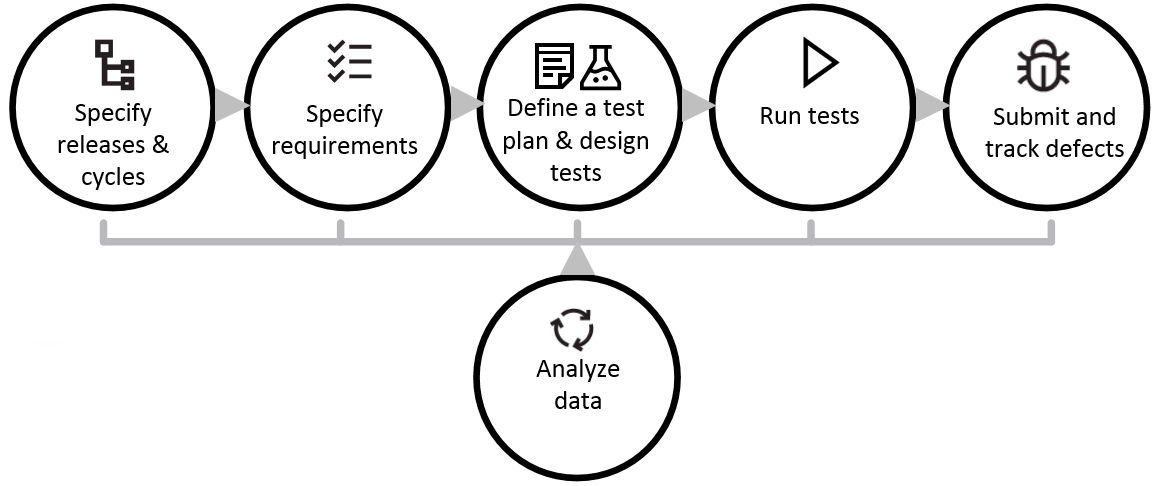Introducing ALM
Application Lifecycle Management (ALM) empowers organizations to manage the core application lifecycle, from requirements through deployment, granting application teams the crucial visibility and collaboration needed for predictable, repeatable, and adaptable delivery of modern applications.
In this topic:
| Introducing ALM |
| Introducing ALM |
| Introducing ALM |
Why use ALM?
With ALM, you can:
- Develop a release-cycle management plan
- Define and maintain requirements and tests
- Create tests
- Create subsets of tests to achieve testing goals
- Schedule and run tests
- Analyze and collect test results
- Submit defects and track their repair progress
- Share libraries across projects
- Integrate with (Undefined variable: _rscB_Branding_Variables._rsc_Company_Name) and third-party tools
How do I get started?
This flow demonstrates how to define a release-cycle plan, define requirements, build test plans, execute tests, and submit defects. Throughout the application lifecycle, you can analyze data by generating reports and graphs.


New to ALM?
Follow the steps in the ALM Tutorial to instruct you how to use the ALM application to organize and manage all phases of the application lifecycle.
 See also:
See also:






